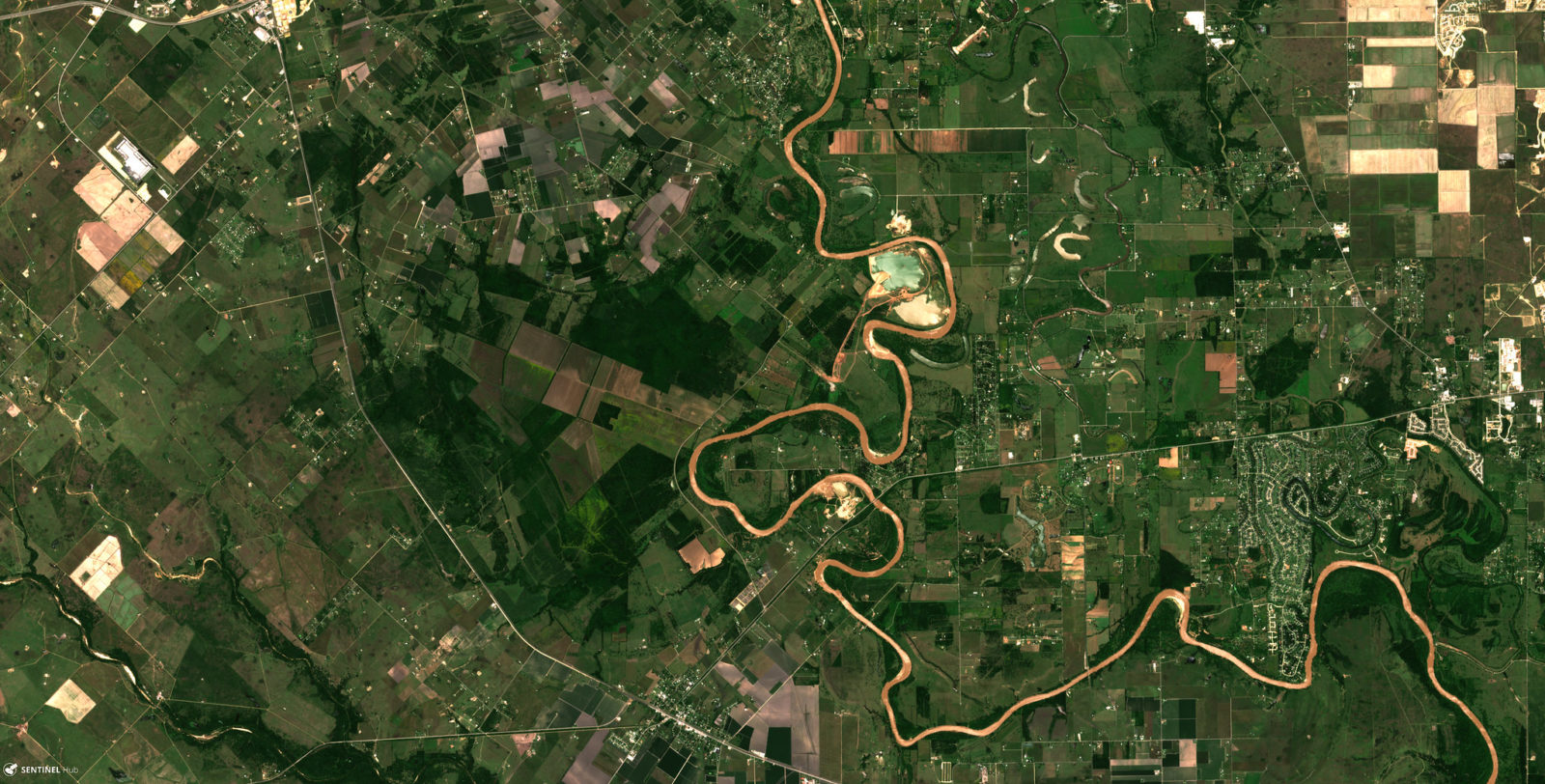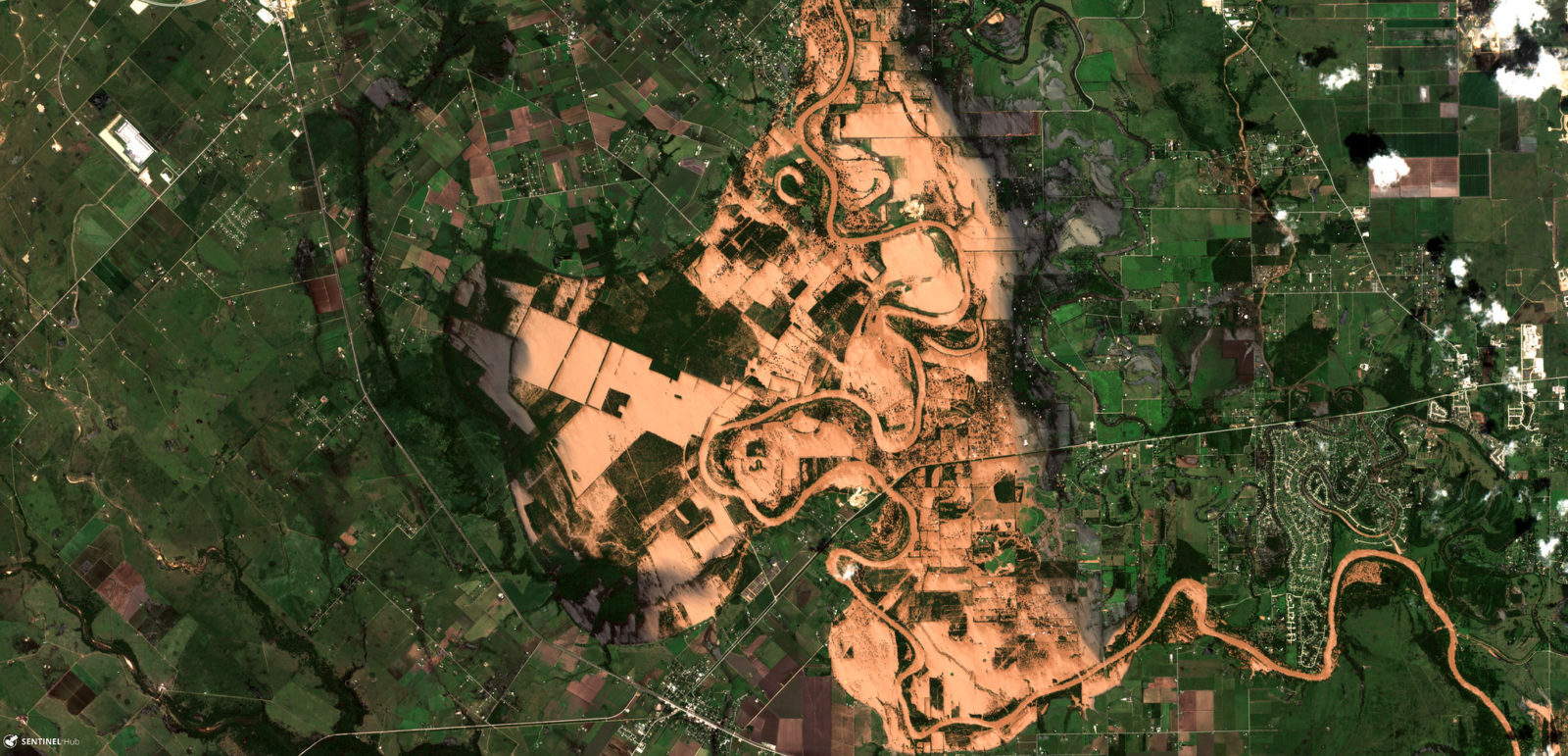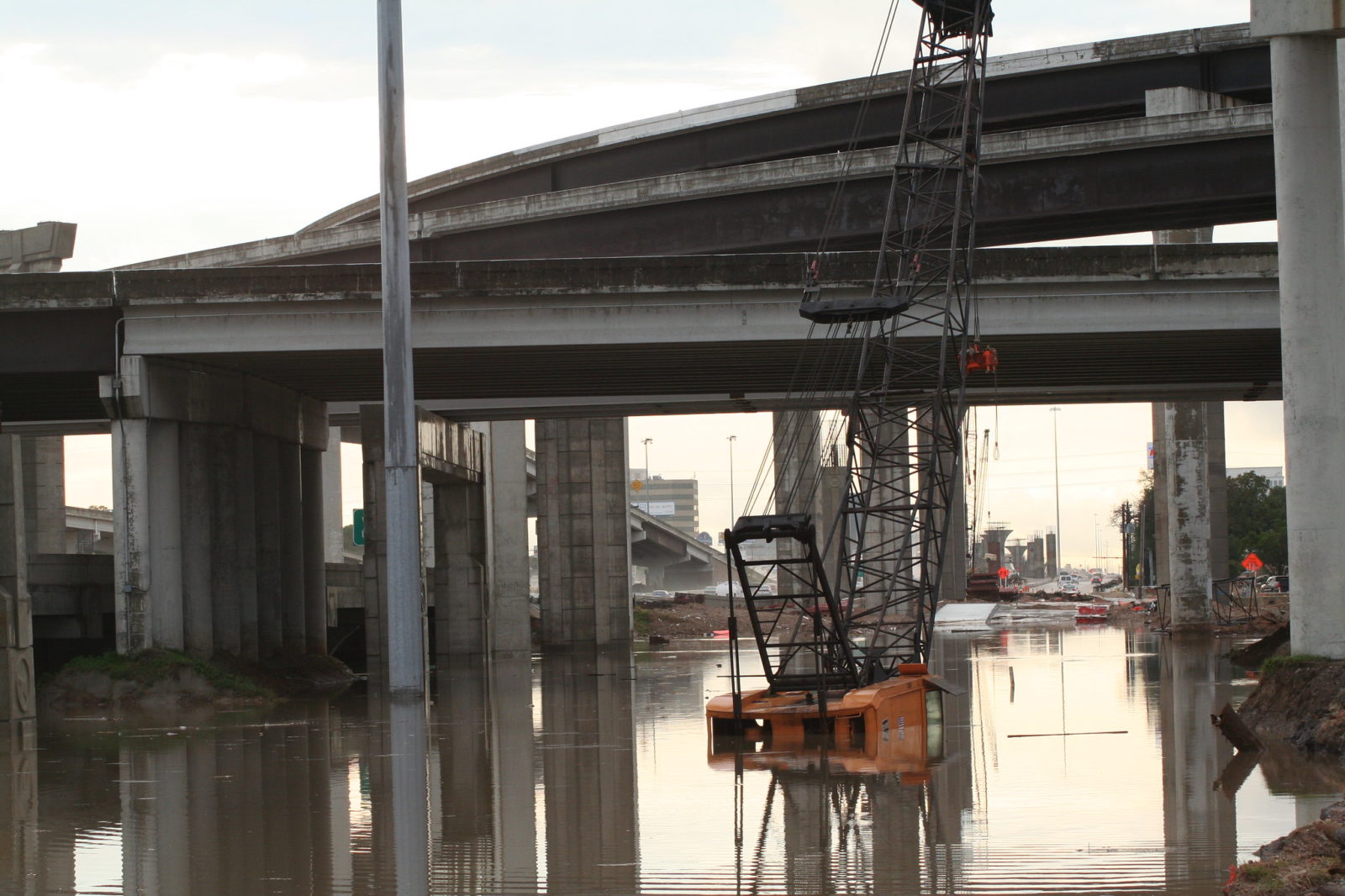Hydraulic Houston
Next to New Orleans, there is another city near the Gulf of Mexico that faces a similarly dire future: Houston, Texas. For several months, anthropologist Dominic Boyer and sociologist Mark Vardy have investigated the impact of repetitive catastrophic flooding on affective attachments to homes, neighborhoods, and the city itself. Here, they describe the amphibious futurism that needs to prevail if Houston is to survive the twenty-first century.
“The parallels between the efforts of a city to divide swampland into solid ground and watercourse and those of its residents to retreat from a sweaty, humid afternoon only to drink pitchers of iced tea in an air-conditioned, de-humidified interior are striking. In both, the enemy is a soupy environment; to live, we separate something dry and something wet from the undifferentiated muck. From this perspective, Houston’s rich population of refineries and chemical plants begins to make sense culturally as well as economically. In one telling, the story of this city is the story of successive generations of settlers fighting battle after battle to redirect, reappropriate, redistribute, and refine inconvenient dispositions of life-giving fluids.” – Larry Albert, Houston Wet
Hurrican Harvey caused unprecedented flooding of the Houston metropolitan area in August 2017. Sentinel Hub, CC BY 2.0
Sentinel Hub, CC BY 2.0
In Aristotle’s Poetics, catastrophe is defined as the moment in a tragedy when the protagonist’s decisive flaw, his “error or frailty” is revealed. That tragic flaw should inspire pity and fear in the audience; “Those who employ spectacular means to create a sense not of the terrible but only of the monstrous, are strangers to the purpose of Tragedy.” On similar grounds, we find Houston’s situation in the Anthropocene to be a pitiable tragedy, one that is terrible but familiar in the sense that the city’s darkening fate is owed above all to settler liberal frailties and errors of rampant self-interest, industrial technophilia, disregard for environmental consequences, pursuit of fossil-fueled productivity and luxury, and desires for mobility and convenience. The tragedy is all about Houston and yet in many ways unspecific to Houston. As Larry Albert writes, “the more seemingly placeless Houston grows, the more it can seem like Houston. If the generic colonization of sprawling settlements with little regard for local conditions can be said to have a hometown, here it is”.1 Albert Pope likewise describes Houston as the very epitome of “an endless and anonymous sprawl of freeways, office parks, subdivisions, and malls … the city that unchecked consumer capital really wants to make.”2 Although it is reassuring to believe that Houston is being condemned by the monstrousness of Big Oil and its minions—perhaps even justly condemned for its petrocultural sins, some would say—the truth is that the origins of Houston’s catastrophe are older than the city itself and that its consequences will be shared widely, in kindred sprawling wetnesses across the world like Jakarta, Lagos, Mumbai, and Shanghai.
And, unlike Aristotelian tragedy, the actual temporality of Houston’s finality is indefinite. It is true that 2017’s Hurricane Harvey offered a spectacle and stream of images that generated pity and fear across the world. But what Houston ultimately faces in the Anthropocene trajectory is not spectacle but the very slow, centuries-long disaster of becoming a coastal city that will then begin to slip under the waves of an expanding Gulf of Mexico. The current average annual sea level rise measured at Galveston Island is 6.62mm/year. That is over twice as fast as the average global rate of sea-level rise, mostly because of the additional thermal expansion of the warm waters of the Gulf. That rate seems existentially manageable until one realizes that the last time that atmospheric carbon dioxide stabilized above 400ppm was during the Pliocene Epoch 2.5 to 5.3 million years ago, when the average global sea level was about 25 meters higher than it is today. Atmospheric carbon dioxide levels today are not stable, needless to say; they average 415ppm at the time of this writing and are rising each year. Even the most optimistic IPCC climate scenarios project 430-480ppm in 2100. Most of the core of Houston (inside the 610 highway loop) ranges between 12 and 24 meters in elevation. In other words, were one to think in Benjaminian messianic time,3 Houston is already under water, even if it might take several centuries of linear time for that wet prophecy to be fulfilled.
A sunken crane in Houston, captured during floods in October 2006. Ed Schipul, CC BY-SA 2.0
For Aristotle, catastrophe marks the climax of the plot; it also generates pathos. Houston will need pathos if it is to survive. It will also, in our view, need to foster a more serious and inclusive kind of hydraulic citizenship that involves every Houstonian rather than only slivers of the elite and that enables them to rethink and remake its sprawling Petropolis without relying upon promises of technological salvation. The settlement of Houston will actually need to become more of a community, transform its relationship to its environment and pursue more diverse modes of amphibious futurism within and between the city’s 23 watersheds. Its hydraulic citizenship will have to be oriented not only to climate adaptation (given that at present Houston literally has no future in “adaptation only” scenarios) but also to climate action, beginning with the immediate shutdown of its petroleum and petrochemical infrastructures and extending to the rapid decarbonization of every dimension of its urbanism. This seems, of course, unthinkable from the vantage point of contemporary Houston. But we live in the era of an exhausted petroliberalism that refuses to imagine, let alone enact new beginnings. In the spirit of Kahnawà:ke theory,4 those of us who live in Houston simply need to refuse those refusals. As Alexei Yurchak described a similarly exhausted Soviet socialism, “everything was forever until it was no more.”5 As Houston becomes amphibious, we must cultivate the better relations of which better futures are made.



